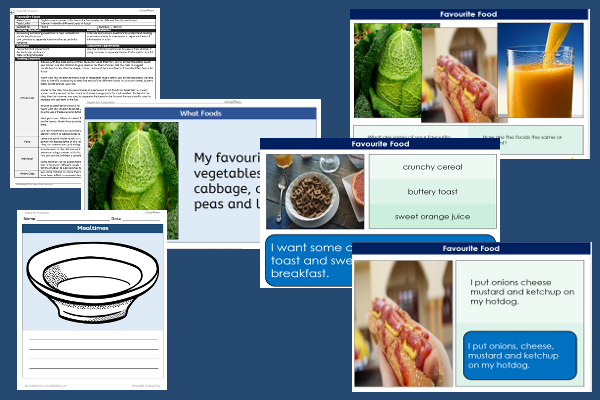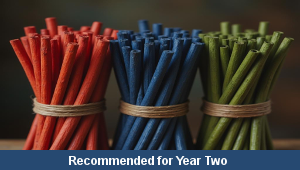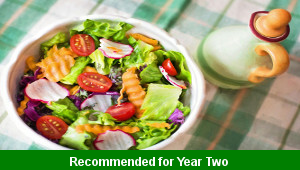Favourite Food

This English teaching pack for Key Stage One gets the children to explore and record how to use commas correctly to list some of the favourite foods that can be eaten at different family meal times.
The class can practise selecting special vocabulary words to describe the shape, colour, size and taste of different foods to use in their sentences listing what families can eat for breakfast, lunch and dinner.
Download this teaching pack including a lesson plan, classroom activities and an interactive presentation to explore and record how to use commas correctly to list some of the favourite foods that can be eaten at different family meal times
Activities in this teaching pack include display posters to explain how to use commas to separate items of information in a list of favourite foods and a template to record how to use commas to separate items of information in a list of foods that can be eaten at a specific mealtime.
The interactive presentation gets the children to explore how to use commas to list favourite foods that can be eaten at different family meal times.
This lesson is part of an English scheme of work to get the children to explain and model how to punctuate sentences correctly using commas to indicate and list foods that can be eaten for different meals and occasions. There are teaching activities for shared learning, differentiated worksheets to support independent learning and interactive presentations to introduce concepts and key skills.
-

Equal Groups
Explore and record how to divide numbers of different groups of things into matching equal groups of two, three and four
-

Food Lists
Explain and model how to punctuate sentences correctly using commas to indicate and list foods that can be eaten for different meals and occasions
-

Ship Sounds
Select, compose and play some of the different sounds using high and low pitches that can be made by ships and boats when at sea and in harbours
-

Addition Bonds and Sums
Practise using different mental and informal written calculations to add pairs of one and two digit numbers using concrete objects and diagrams to support calculations
